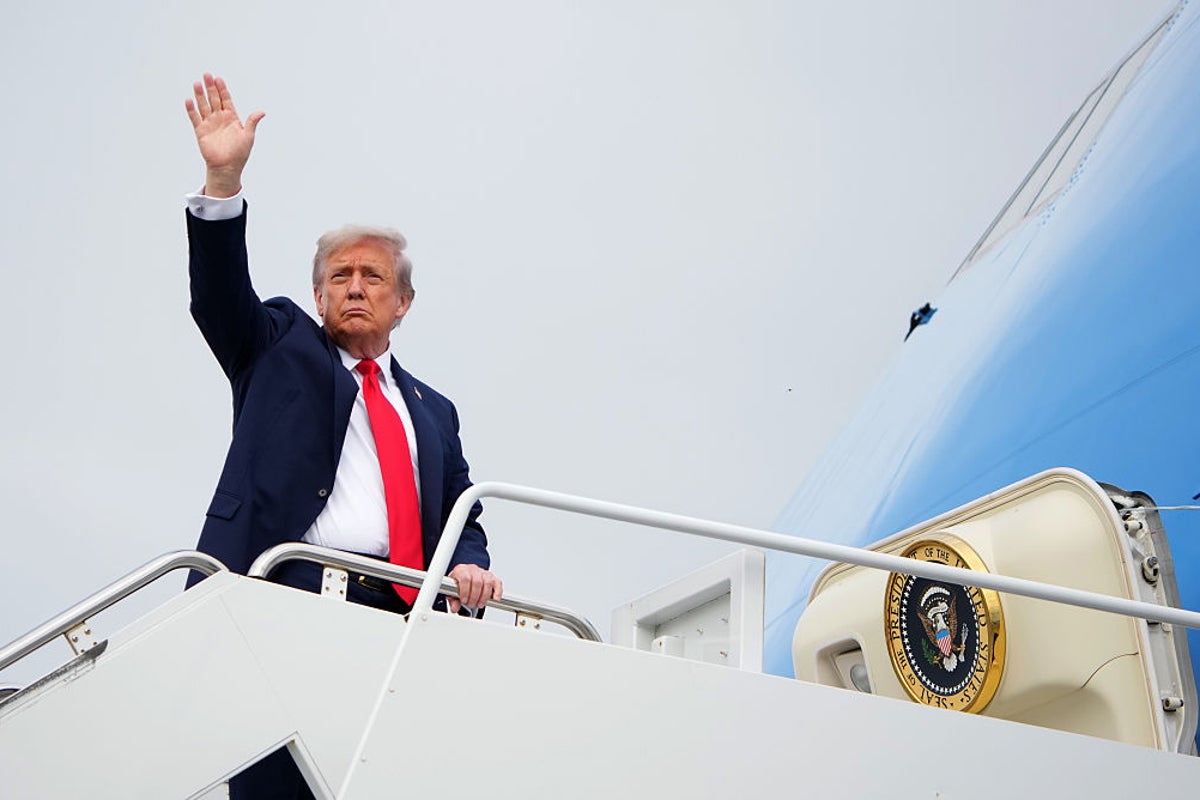
President Donald Trump will witness a truly unified front Monday as leaders of Europe visit the White House to deliver one message: the continent is standing with Ukraine.
The question for the president and countries such as the U.K. and France – that are long-standing allies, is whether Europe and America are also together in their message.
By achieving peace in Ukraine, after conflict broke out on his predecessor’s watch, Trump hopes to win a Nobel Peace Prize. But he has also been seen as a president who cozies up to American rival Russia.
If Friday’s meeting with the other side was any indication, the president’s plan for inking a peace agreement involves making significant concessions to Vladimir Putin. The Russian president visited Alaska to meet with Trump, where uniformed U.S. troops rolled out a red carpet for his arrival and Trump treated him like an honored guest. After their conversation, Trump announced that he was abandoning his demand for an immediate ceasefire and it was reported that he’d made two key concessions to the Russian leader by agreeing to accept Russian demands for the cessation of the entire Donbas region and an end to Ukraine’s NATO ambitions.
Over the weekend, Trump envoy Steve Witkoff touted a separate development in the talks as a win for the U.S. and Ukraine: Putin supposedly agreed to the prospect of the U.S. providing an Article 5-like security guarantee to Ukraine, pledging support in the event of further Russian aggression. It’s not clear how far that acceptance would extend, particularly if other NATO countries signal interest in signing security pacts with Ukraine.
European leaders visiting the White House on Monday will walk a delicate line. British Prime Minister Sir Keir Starmer, part of the delegation, made clear over the weekend that the “coalition of the willing” supports Trump’s efforts to continue peace talks with Russia. But Ukraine must be involved, they’ll argue, and must be in control of drawing its own red lines.
Trump will have to decide if even that marginal level of pushback is, in his mind, more of an obstacle to peace than Putin’s demands for territory currently occupied by Ukrainian forces.
Ahead of Friday’s summit in Anchorage, members of the same coalition appealed to Trump over the course of several days to not negotiate away territory on Ukraine’s behalf, with many insisting that Ukraine’s Volodymyr Zelensky should be part of any talks with Putin; direct Russia-Ukraine talks were agreed upon in May, then delayed indefinitely.
On Sunday, Trump erased all doubt as to where he stood. In a Truth Social post, he demanded that Zelensky give up the Crimean Peninsula as well as ambitions of joining the NATO security alliance.
“President Zelenskyy of Ukraine can end the war with Russia almost immediately, if he wants to, or he can continue to fight. Remember how it started. No getting back Obama given Crimea (12 years ago, without a shot being fired!), and NO GOING INTO NATO BY UKRAINE. Some things never change!!!” the president wrote.
The supposed movement of Putin on a security guarantee for Ukraine, protecting it from a future Russian attack, remains the only point of positive momentum for the Ukrainian side. But Witkoff and Secretary of State Marco Rubio were evasive about the specifics of the kind of agreement Putin said he would consider — Witkoff in particular couldn’t say whether it would involve U.S. or European boots on the ground in Ukraine in the event of a second Russian invasion, a complicated prospect given the unpopularity of aid for Ukraine among Trump’s base.
Whether European countries would be able to commit to the kind of direct military support that the U.S. could under a hypothetical peace agreement remains unclear, and a question they’ll likely insist be answered. Zelensky, in his own Saturday statement, implied that Ukraine would not accept anything less than a reliable, concrete plan with European involvement to protect Ukraine’s sovereignty in the future.
“Security must be guaranteed reliably and in the long term, with the involvement of both Europe and the U.S.,” he wrote on Twitter.
The hand-picked members of the European delegation — Starmer, Finnish president Alexander Stubb, German chancellor Friedrich Merz, French president Emmanuel Macron, Italian Prime Minister Giorgia Meloni and the EU’s Ursula von der Leyen — have all worked to foster positive relations in their own dealings with Trump. Their charm offensive on Zelensky’s behalf could succeed in changing Trump’s mind, given his proven willingness to reverse course on many issues in the foreign policy sphere.
But after Putin’s flattery erased the president’s threat to levy further sanctions against Russia unless a ceasefire was reached, it’s not clear whether they’ll have any success in convincing the U.S. president that his Russian chum is engaged in stalling tactics.
For Trump, his lonely quest for recognition of his peacemaking efforts continues. Ukraine presents the ultimate test of his alleged skills, and it’s clear that the president has a long way to go before he wins over either side to the idea of laying down arms.
On Monday morning, the president was defiant, at once both insisting that his critics and doubters were wrong once again and sending a clear red flag to the visiting European delegation: “I know exactly what I’m doing,” he raged on Truth Social.
“I don’t need the advice of people who have been working on all of these conflicts for years, and were never able to do a thing to stop them.”
